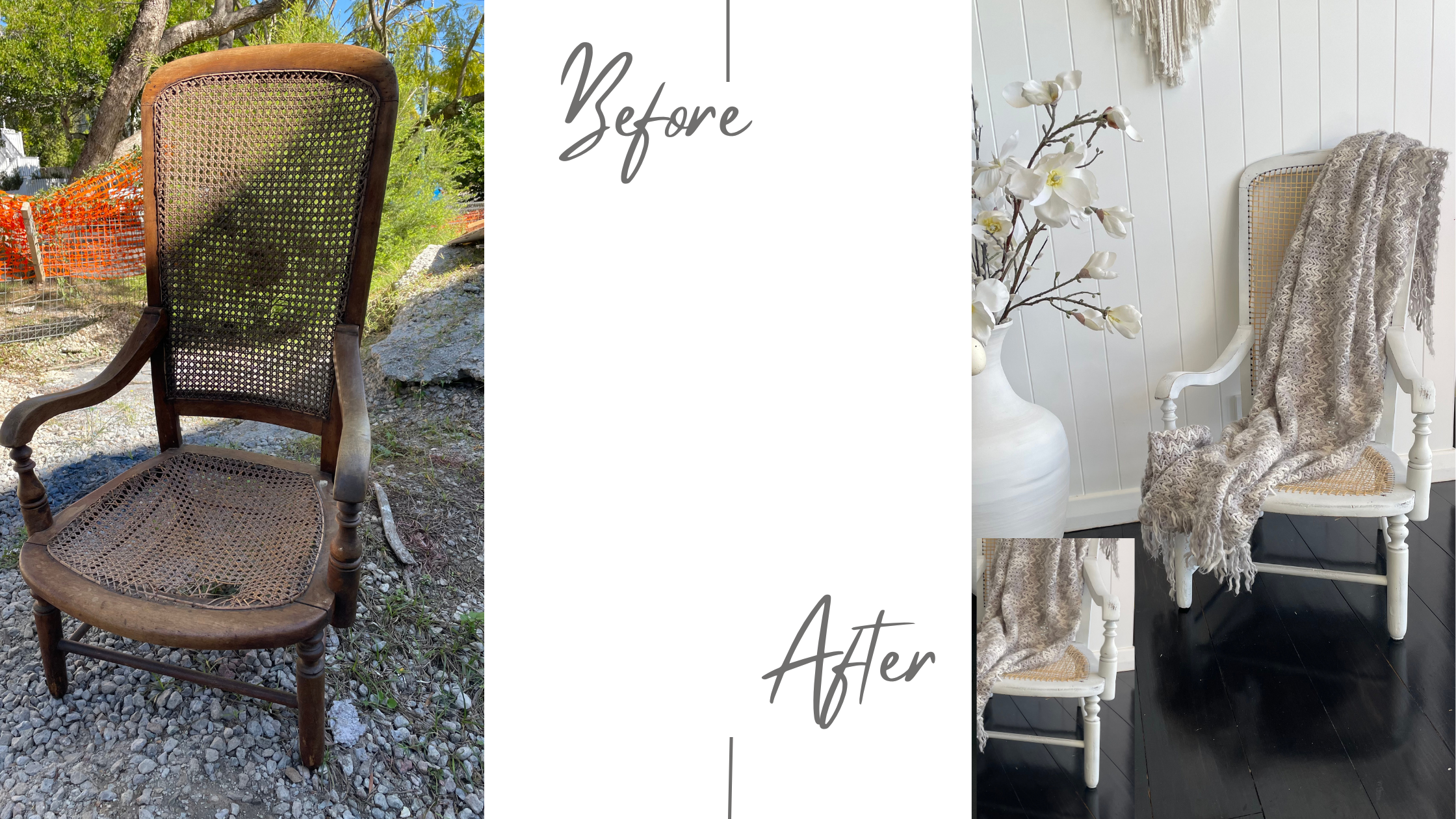
How to Distress Furniture in 5 Simple Steps
In this blog I’m going to share with you how I took $5 chair and turned it into a beautiful custom accent chair for our home. I’ll be sharing step by step how to achieve this look so you can achieve the same finish.
I love distressed furniture, and in most of my upcycles, it’s the type of finish I aim for as it makes a piece look well-loved and lived in. Distressed furniture looks great in many different settings, whether you love a coastal vibe, country, french provincial or modern, a distressed piece can add a tonne of personality to your room.
Being someone who loves to add a little charm to a new exterior, distressing your furniture is a great way to achieve this look so I thought I’d share my tips to achieve this look using a recent chair I upcycled using Dulux Duramax® chalk
Paint. And as it’s spray paint, there’s no brushes to clean up so it’s a win-win in my book.
The key to distressing is layers, let’s get started.

Before I could work on the chair I needed to remove the old rattan. Unfortunately, it was brittle and couldn’t be saved or patched.
I soon found out that the rattan was what was holding the chair together!

Step One Prep and fill
Preparation is so important when it comes to painting. My chair was a little unusual in that it was in pretty bad shape so I had quite a bit of work to do before i started painting.
The first thing we needed to do was glue and nail the chair back together. Thankfully when the chair fell apart we kept all of the smaller pieces so it was literally like a puzzle.
We glued the pieces into place then used a 18ga nailer to secure each corner and strengthen them.
Once I had made the repairs to the seat and arms, I applied wood filler to some of the most damaged sections. I’m not usually too particular with this as I don’t mind a little age shining through, it’s all personal taste.

Step Two Sand & Clean
Once you’ve filled, sand your piece. Depending on the current finish, you may want to use an electronic sander. My chair had very little varnish on it, so I just used a sanding block. If it’s heavily varnished, you will want to remove the varnish using a paint stripper or, my fav hack, oven cleaner. Before you paint, make sure to clean the surface to remove any dirt and impurities

Step Three Paint & Prime
Prime – I used Dulux Duramax® undercoat spray to prime my chair and applied one coat using light strokes.
Paint
-
- First Colour – I applied 2 coats of Dulux Duramax® Riviera Grey Chalk Finish Spray Paint and left for 2 hours to dry between coats
- Second Colour – I applied 2 coats of Dulux Duramax® Parisian White Chalk Finish Spray Paint and left for 2 hours to dry between coats


Step Four Distress
Once the paint was completely dry, I ran a sanding block along the edges of the chair and along the front and back. By applying more pressure you will expose the wood, and less pressure, you will expose the first shade of paint. There’s no right or wrong here, depending on the look you want to you may choose to subtly distress your piece or you could be far more aggressive.

Step Five Prep the Cane
This is the step that was completely new to me. I have never done any type of weaving so this step was a little stressful as I really had no idea what I was doing. But like with every project, I do my youtube research and then just figure it out as I go.
The first step was to soak the cane. This step is really important otherwise the can will snap whilst you weave. You need to soak it in warm water for 2-3 minutes before you start weaving.
Step Six Start Weaving
TIP: I found the cane frayed when I was weaving so I rubbed Vaseline on the threads of the cane before I started weaving and it worked a treat. It made the weave much easier to thread and didn’t fray.

Step Seven Start Weaving
I started from back to front and wrapped the weave then side to side .


I don’t think I have a future in weaving but I’m so glad that I had a go. Once I started using vaseline it made life so much easier.
The weaving process took a really long time, although it’s really repetitive and I don’t think it’s overly difficult but what is difficult is getting it even and once the weave is a little tight it get a little challenging.
What’s next?
We have a load if DIY projects for your home and renovation, to see them first join the newsletter.
Join
Work With Me



0 Comments